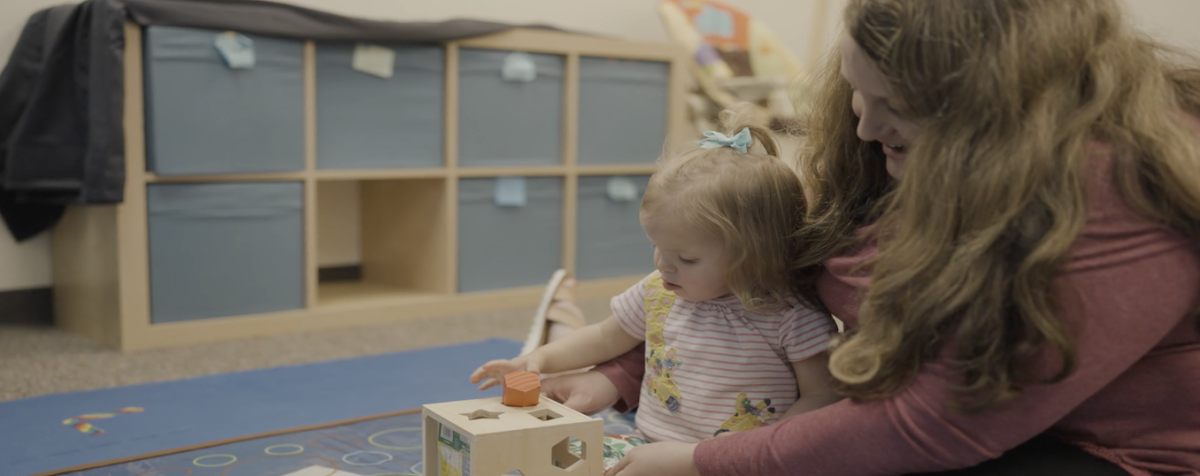Research
Our current research is focused around The Care Project, designed to help us understand how early childhood experiences shape continuing mental and physical health. The Care Project explores two phenomena: depression during pregnancy and the ways babies visually explore emotions. Here, you can read more about this project and the methods and tools we use to conduct this research.
-
The Care Project
Depression during pregnancy is very common, affecting 13–40% of pregnant individuals. Psychotherapy during pregnancy can reduce depression symptoms.
The Care Project is a large randomized control trial funded by the National Institute of Mental Health that tests whether our program MomCare, helps moms with feelings of sadness or depression during pregnancy and benefits both mom and baby (read here).
We are now examining whether this prenatal intervention (read here) has positive impact on child outcomes, such as brain development, socio-emotional development and physical health (read here).
You can also learn more about the Care Project here: Care Project website.
-
Unpredictability and Development
The global burden of early life adversity is profound. The World Health Organization has estimated that early life adversity accounts for almost 30% of all psychiatric cases. However, not all individuals who experienced early life adversity will develop mental illness, and our ability to predict who will develop mental illness remains poor. There is also a critical need to identify underlying pathways and mechanisms by which early adversity affects mental health. Our team investigates unpredictability as an understudied aspect of early life adversity that may be modifiable through interventions. Specifically, our team tests pathways by which unpredictability may impact the developing brain. Our cross-species work demonstrates that unpredictable parental signals influences cognitive (read here) and emotional development (read here). To learn more about our approach, read more here: Our Mission | Conte Center @ UCI and read our latest review paper.
-
Neonatal Hair Cortisol
Newborn hair can give us a window into experiences babies had during the third trimester of pregnancy. Hair begins to grow around 24 to 28 gestational weeks. By measuring baby's hair at birth, we can measure the cortisol they produce and were exposed to as a fetus. Although we often think about cortisol as a stress hormone, cortisol also plays a critical role in fetal maturation. Our work and other labs have shown that babies who were born preterm had lower fetal cortisol on average (measured from newborn hair), suggesting that cortisol in babies' hair may be an important marker of their fetal experience.
-
Eye Tracking and the CARE Project
A baby's ability to take in their environment grows rapidly over the first year of life. Newborn babies' vision is rather blurry and in the first week, they can see objects around 8–12 inches away from their face most clearly (which is about the distance from their face to yours during feeding!). Their vision, however, improves dramatically across infancy and starts to become more adult-like around 12 months.
As vision develops, babies begin to show preferences for what types of things they like to look at. Perhaps most commonly, we see that as babies grow, they start to prefer looking at faces. As they gain more experience looking at faces (especially those of their caregivers), babies will start to spend more time looking at the eyes and mouth and will learn to tell the difference between different types of emotional expressions.
In the Care Project, we measure how babies visually explore different types of emotional faces using eye tracking. Babies are shown a series of faces including happy, sad and angry faces, and the eye tracker records where the are looking on the screen throughout the task. We hope to see how babies are exploring these faces and here are some of our recent findings: Swales et al., Hennessey et al.! For more information on eye tracking and other methods used in the Care Project, visit the Care Project website.




